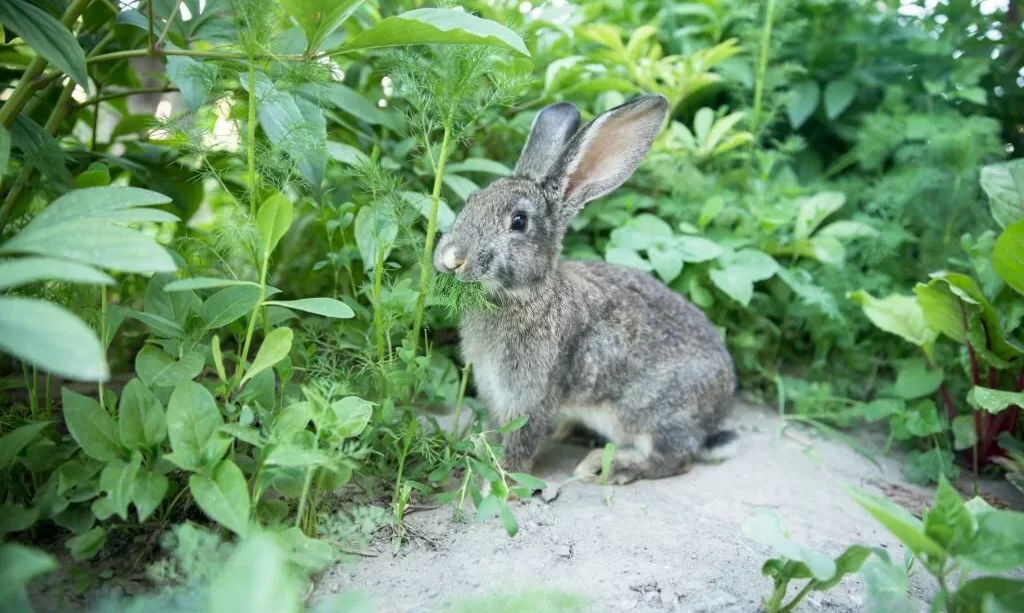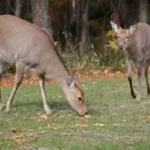If you’re an enthusiastic gardener, you might have experienced the frustration of seeing your hard-earned tomato plants mysteriously nibbled and damaged. One potential culprit in this scenario is the common rabbit. In this article, we’ll explore whether rabbits have a taste for tomato plants and provide insights into how to protect your garden treasures. Understanding the behavior of these furry creatures and being able to identify their damage early can make a significant difference in preserving your tomato plants and enjoying a thriving garden.
- 🍅 CLASSIC TOMATO – San Marzano is a paste type tomato great for salsa, sauces and Italian dishes
- 🍅 FLAVORFUL – San Marzano tomatoes pack a punch with flavor. Meaty, tender, sweet and delicious
- 🍅 HEIRLOOM – Non-GMO, Heirloom and open-pollinated San Marzano tomato seeds – Can save seeds for future gardens
- 🍅 GUARANTEE – We know you’ll love your San Marzano tomato seeds, but if for any reason you aren’t please contact us
- 🇺🇸 USA – Our San Marzano tomato seeds are grown and packaged right here in the USA, 200mg per packet
Rabbit Behavior
Rabbits are well-known for their voracious appetites when it comes to plants. Their diet primarily consists of grasses, herbs, and tender young shoots. Understanding their behavior is essential in gauging the risk they pose to your tomato plants. Rabbits often venture into gardens and yards in search of their favorite delicacies. Tomato plants, with their succulent leaves and tender stems, can be a tempting treat for these herbivorous creatures. By understanding what attracts rabbits to your garden, you can take proactive steps to safeguard your tomato plants.
Identifying Rabbit Damage
To protect your tomato plants effectively, you must be able to recognize the signs of rabbit damage. Rabbits are notorious for leaving distinct telltale marks. Look for chewed or nibbled leaves, stems with a clean, diagonal cut, and sometimes even gnawed bark at the base of plants. If you spot these indicators, it’s a clear sign that rabbits have been feasting on your tomato plants. Prompt identification of rabbit damage is crucial for taking timely measures to safeguard your garden and your precious tomato crop.
Prevention Methods
To protect your tomato plants from rabbit damage, several effective prevention methods can be employed. One of the most reliable approaches is installing physical barriers, such as chicken wire or fencing, around your garden. This creates a barrier that rabbits find challenging to breach. Ensure the fencing extends at least six inches underground to prevent digging access. Additionally, raised garden beds can help deter rabbits from reaching your tomato plants.
- Gets progressively smaller towards the bottom
- Offers a 4, 2, 1 ration of 4 inches on top then leading down to 1 inch
- Upper horizontal wire Spacing allows hands to pass through
- Great temporary barrier around trees, bushes, and flowers
- Vinyl coated Option available
Natural Deterrents
While physical barriers are highly effective, there are also natural deterrents that can help keep rabbits away from your garden. Planting rabbit-resistant companion plants, such as marigolds, onions, or garlic, can discourage rabbits from venturing near your tomato plants. These companion plants emit odors or have tastes that rabbits find unappealing. Utilizing companion planting not only helps protect your tomatoes but also promotes a diverse and healthier garden ecosystem. By incorporating these natural deterrents into your garden, you can reduce the likelihood of rabbit damage without resorting to harsher methods.
Rabbit-Resistant Tomato Varieties
For gardeners concerned about rabbit damage to their tomato plants, there’s good news. Some tomato varieties are naturally less attractive to rabbits. Varieties with thicker, more leathery leaves and stems tend to be less appealing to these herbivorous pests. Examples of such rabbit-resistant tomato varieties include ‘San Marzano’, ‘Roma’, and ‘Amish Paste’. By choosing these varieties for your garden, you can reduce the likelihood of rabbit attacks and enjoy a bountiful tomato harvest.
Ethical Considerations
While protecting your garden from rabbit damage is essential, it’s equally important to approach the issue with ethical considerations in mind. Humane and environmentally friendly methods for dealing with rabbit issues should be a priority. Avoid harmful traps or poisons, which can have adverse consequences for both rabbits and other wildlife. Instead, focus on prevention and deterrence techniques that are considerate of wildlife conservation. Coexisting with nature, including rabbits, can be achieved by striking a balance between garden protection and respect for the environment.
Conclusion
In conclusion, the question of whether rabbits will eat your tomato plants is a valid concern for many gardeners. Understanding rabbit behavior, recognizing the signs of their damage, and implementing effective prevention methods are key to safeguarding your garden and tomato crop. By choosing rabbit-resistant tomato varieties and approaching the issue with ethical considerations, you can enjoy the beauty of your garden and the bounty of your tomato harvest without undue worry about rabbit interference. A thriving garden and a harmonious coexistence with wildlife are both achievable goals with the right knowledge and strategies in place.






